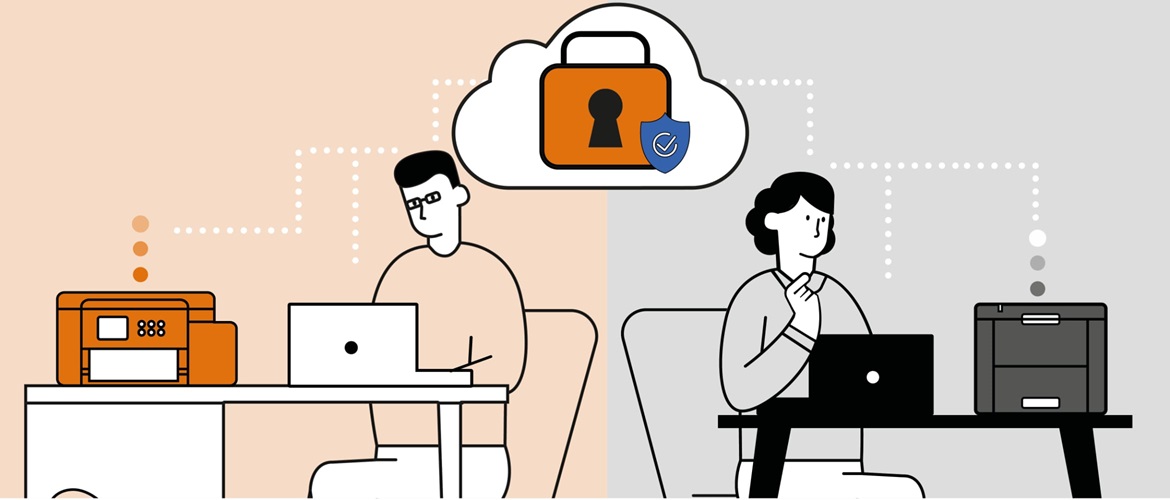
8 tips on how to secure your home network
With many of us now choosing to work from home, network security risks increase.
If you have worked in an office environment, it’s unlikely that you have ever had to worry about network security, unless you work in IT. However, now that more of us are working from home, or transitioning to hybrid offices, it’s important everyone has an understanding of network security.
If you’re working from home, then your network needs to be as secure as the one in your office. If it’s not, then you could inadvertently leave your organisation open to a cyberattack or data breach. Home network security is more important than ever, and this includes ensuring your devices and documents are safe. Let’s take a look at eight tips to make sure your home network is as safe as houses.
1. Change default username and password
Your Wi-Fi home network comes with a default username and password as standard, but they can often be easy for criminals to hack. Protect your network by changing both your username and password to something stronger. Ideally your username should prevent attackers from being able to identify whose network it is, and your password should be strong enough to stop hackers in their tracks.
Strong passwords should be eight characters or more, contain a random combination of lower and uppercase letters, numbers, and other symbols, and have no obvious connection to you. Changing the username of the router can also make it harder for criminals to work out which type of device you have.
2. Turn on wireless network encryption
The most secure encryption protocol widely available is WPA2 (Wi-Fi Protected Access2). This basically works by encrypting any data sent or received from your home network. WPA2 uses the AES (Advanced Encryption Standard) algorithm, which is a significantly more robust and complex encryption protocol.
While the latest routers will likely use this encryption, older devices may still use outdated security tools like WPA or WEP. It’s worth checking your router to see which wireless network encryption it uses and making sure this is turned on.
3. Use a VPN
A VPN (Virtual Private Network) is a private and anonymous way to go online. It masks your IP address and location and therefore protects your identity while also encrypting any information you send or receive. You can also use a VPN on a desktop computer, laptop, or smart device so it’s ideal for home workers who might find themselves doing work in different locations around their house.
4. Hide your network from view
Wi-Fi networks have a default and publicly visible name known as an SSID (Service Set Identifier). It’s not just important to change this to prevent your network being identified, but you can also enable SSID hiding to conceal it completely. Hiding it from view is the equivalent of going invisible. It’s another good way to keep hackers off your trail.
5. Turn Wi-Fi off when not at home
It’s amazing how few people do this but turning off your Wi-Fi whenever you leave the house is actually an excellent and very simple way of making your home network more secure. By switching off your Wi-Fi when you’re not using it, you immediately reduce the chance of a cyber-attack while you’re out.
6. Update router software
Cyber criminals are becoming more sophisticated all the time when it comes to finding ingenious ways to get around security. Therefore, router firmware software needs to be constantly updated to keep one step ahead. Your router is the key to your home network security so it’s crucial to ensure it has the latest safeguards and protection. Don’t assume it will auto-update either as the majority of routers will need you to manually update the firmware.
7. Install a firewall
Firewalls basically act like a barrier between your network and all of the dangerous viruses and cyber criminals trying to break in. You definitely need a firewall, and it needs to be updated at least once a year. While many routers have firewalls built in, you should make sure it is turned on and that it has the latest updates. It’s possible to install both internal and external firewalls for more protection too.
8. Change passwords frequently
We have all been guilty of using weak, predictable passwords at least once in the past, but it’s vitally important to stop doing this and follow the good password practice we mentioned above if you want to avoid being hacked. As well as choosing a strong password and keeping it safe, you should also change your password as frequently as possible and use different passwords for your various devices and accounts.
Summary
Is my home network secure? In the age of hybrid working, home networks are no longer just for personal use and network security is not just the responsibility of IT departments. An insecure and easy to hack home network could put your organisation at risk so it’s vitally important to take the necessary precautions and follow the good security practices such as the tips above if you want to keep yourself and your employer safe.

